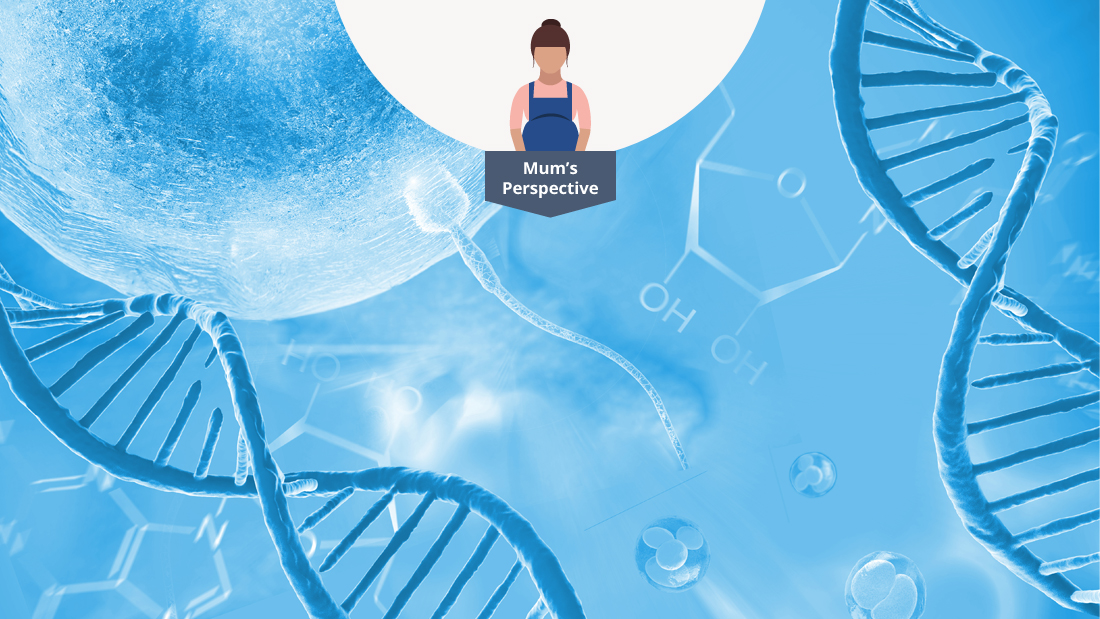
Egg plus sperm equals baby?
It’s rather confusing, but in week 2 of your pregnancy, you aren’t actually pregnant yet.
Doctors count the first day of your last period as the first day of pregnancy. So, by the time you find out that you’re pregnant, you’re probably already around four weeks pregnant.
Until comparatively recently it wasn’t easy for women to find out if they were pregnant or not, but with some very sophisticated tests on the market today, a pregnancy can be detected even before a missed period. Here, we find out what week 2 of pregnancy was like for this first-time mum.
Ovulation, zygotes and blastocysts
I was 35 when my husband and I decided that we’d like to try for a baby.
I’d watched my friends get pregnant and then go on to give their children brothers and sisters. Some had struggled to get pregnant, but for others it was easy. I really hadn’t thought much about being a mum until I hit my 35th birthday.
Because of my age, we decided quite early on that it was best to be as prepared as we could be. According to the experts, a woman’s fertility begins to decline in her early 30s and then more severely after the age of 35. By the age of 40, she only has a 5% chance of becoming pregnant in any given month.
For us, this meant that we had do to things right. We gave up smoking and drinking completely, made sure to stay at least a little bit active and I gave our diet a complete overhaul to weed out convenience food. I tried to concentrate on stocking the fridge, freezer and fruit bowl with healthy alternatives. I invested in a prenatal multivitamin and read tonnes of information about the process of conception.
In this modern age, virtually everyone is familiar with the baby-making process; an egg is released from the ovary, travels into the fallopian tube, waits to be fertilised and then implants into the womb! It sounds straightforward, but actually the journey from ovary to womb is much more complicated than I ever realised. While you’re taking ovulation tests and working out your fertile days, your body is busy making sure it’s all set up to nurture an embryo. You just have to let it do it’s stuff.
But, I wanted to know what was happening to me.
As a woman reaches half way through her cycle, immature eggs are developing in fluid-filled cysts called follicles. A full egg occurs in just one of these follicles and the rest have their growth suppressed by this dominant follicle so they stop growing and die and get absorbed back into the body.
Once the ovary has released this egg, it travels to the fallopian tube and it’s there that fertilisation will happen. Despite several million sperm being sent from one ejaculation, it only takes one good swimmer to fertilise your egg. Once it’s in, the protective coating of the egg changes to make sure no other sperm can enter.
The really exciting thing is that it’s at this very moment of conception that your baby’s genetic make-up is set. Its sex, physical attributes and any genetic abnormalities are now written into the embryo’s DNA. Meanwhile the hormone progesterone is busy making sure that the lining of the uterus, known as the endometrium, is thick enough to receive this precious ball of cells, and a mucus plug forms to seal the cervix and keep your baby snug and safe for the next nine months.
And whilst this multi-stage, complex process is going on, you will probably have no idea. It all takes place in what’s known as the “two week wait” where you literally have to wait to find out if you’re pregnant.
Pregnancy tests have advanced so far these days that the pregnancy hormone hCG (human chorionic gonadotropin) can be detected up to five days before you’ve even missed your period. The problem with these tests is that whilst they may show a positive result, it’s so early on in the pregnancy that in some cases it doesn’t progress and the woman suffers a ‘miscarriage’ but actually she thinks she’s just had a normal period.
It was for this reason that I decided I wouldn’t even contemplate testing until I had definitely missed my period. That said, I did feel very lucky that I had the choice whether to test or not.
Although the first reference to a urine-based pregnancy test was dated 1362, it was several hundred years later before any technique had been perfected enough to be marketed as a reliable test for pregnancy. As late as the 1980s women still had to get their doctor to send a sample of urine away to a lab for analysis to reveal whether they were pregnant or not. This must have been very difficult for women whose pregnancy was not planned – now we can find out in the privacy of our own bathroom.
Now, there’s a wealth of medical information out there which has been simplified for the lay person so that we could understand exactly what was going on in our bodies.
Knowing each stage of the conception process helped me to feel bonded to my baby from very early on. I imagined each stage of his journey and even when I bled slightly around the time that my period would have been due, I didn’t worry because I knew that it was probably ‘implantation bleeding’ (where a tiny bit of the endometrium comes away as the embryo burrows into it).
There’s no doubt that medical science has come on in leaps and bounds in recent years. And more than that, thanks to the internet and other sources, eagerly pregnant women are for the first time able to follow and understand each stage of the development of our children. It’s a great time to be pregnant.


